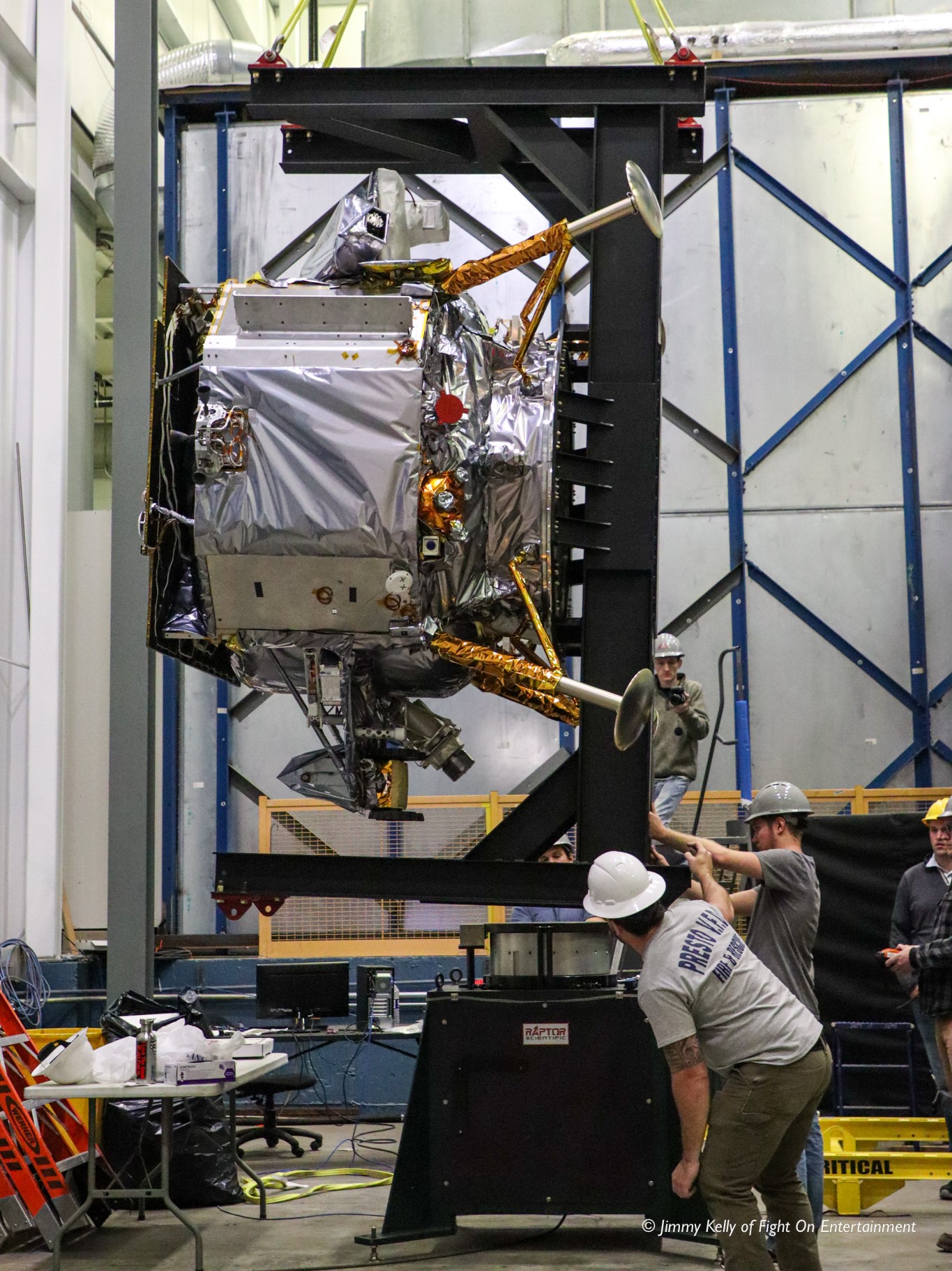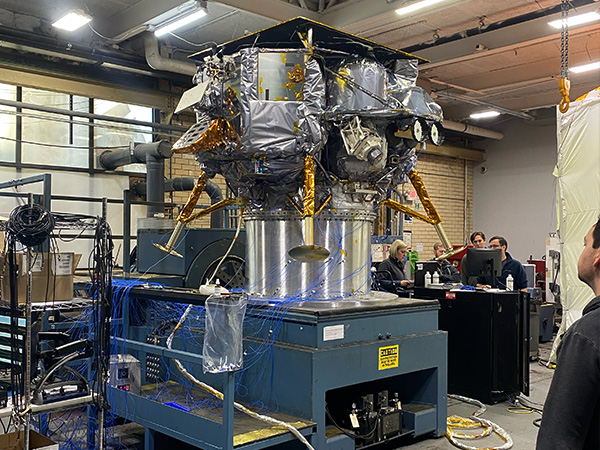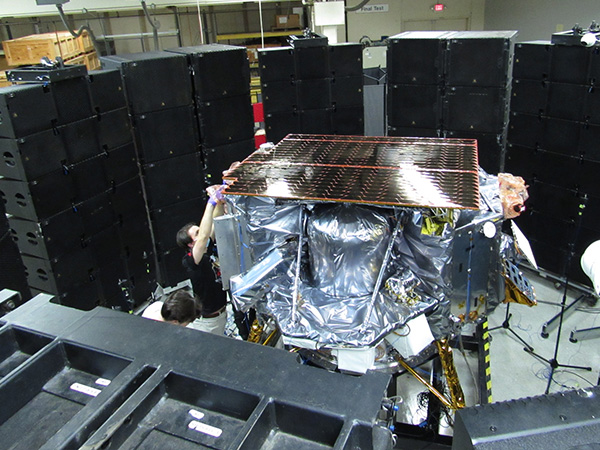
Photo credit: Jimmy Kelly of Fight On Entertainment
Pittsburgh, PA – December 8, 2022 – Astrobotic’s Peregrine lunar lander has successfully passed its first two acceptance tests, a critical milestone on its path to flight.
Acceptance testing was conducted at the Dayton T. Brown, Inc. commercial test facility in Bohemia, NY. The campaign included sine vibration, and acoustics testing and proved that Peregrine can withstand the flight environment of United Launch Alliance’s (ULA) Vulcan Centaur, the launch vehicle for Peregrine Mission One.
“The completion of environmental testing marks a critical step forward in our program. This testing ensured the spacecraft is fully capable of meeting the rough environments it will feel during launch, transit, and landing on the Moon. Successfully completing this harsh testing shows how much preparation, hard work, and perseverance our team has put into this mission. It takes a great team to complete the testing, let alone to do it without a single issue arising,” says Pete Frye, Mechanical and Fluid Systems Manager at Astrobotic.
Sine vibration testing replicates the low frequency vibrations the lander will be subjected to through its mounting adapter inside the Vulcan Centaur fairing during liftoff and as Vulcan leaves Earth’s atmosphere. Acoustic testing subjects the lander to the sound pressure waves it will encounter within the fairing during those same phases. These industry-standard tests confirm the lander’s structure and propulsion system along with the lander’s many sensitive avionics, optics, and payloads will survive this intense loading environment as Vulcan delivers it to space.
“The Astrobotic team is working tirelessly to an aggressive schedule for delivery to the launch site, and in fact these recent tests were completed ahead of schedule. The momentum to launch is apparent in the team’s excitement,” says Sharad Bhaskaran, Mission Director for Peregrine Mission One.
Peregrine is currently undergoing electromagnetic interference (EMI/EMC) testing. Then, the spacecraft will be sent to thermal vacuum testing before it arrives in Cape Canaveral, Florida for integration with ULA’s Vulcan Centaur. Launch is scheduled for Q1 2023.



